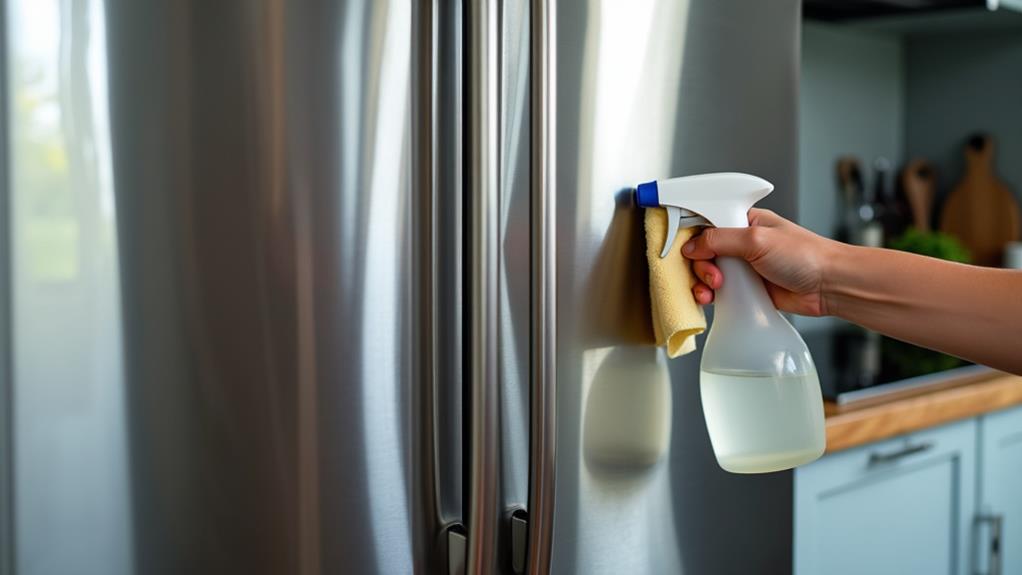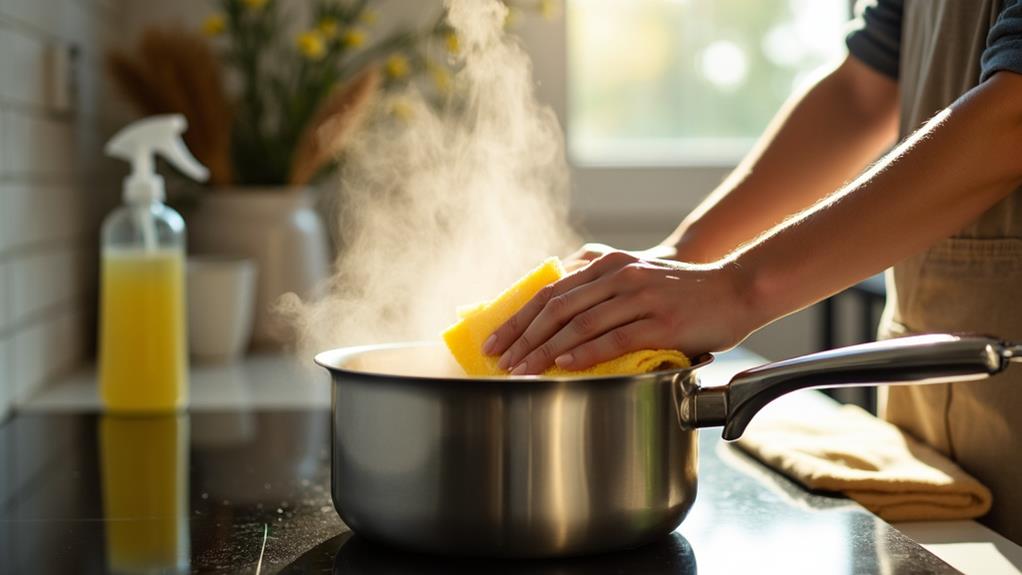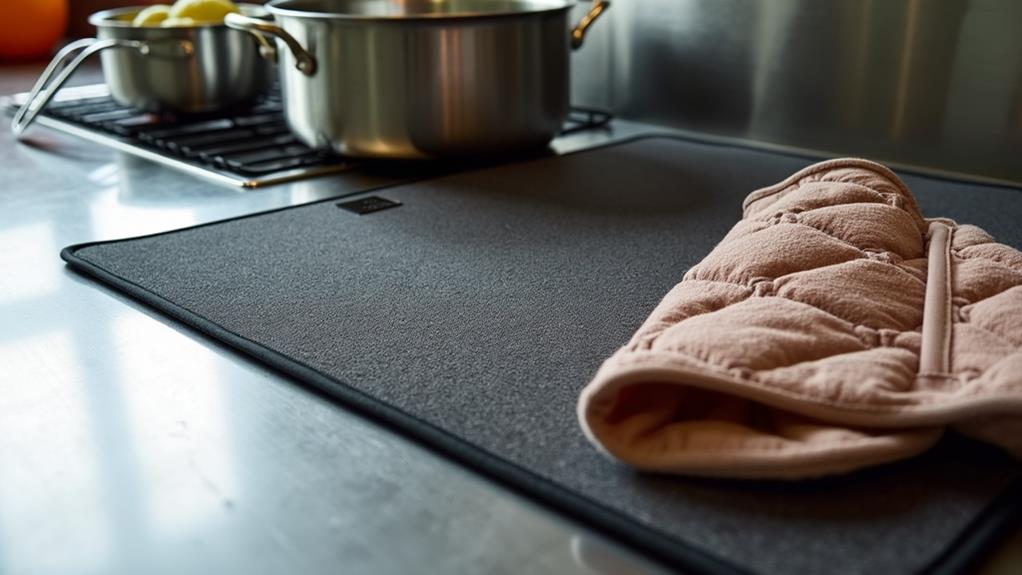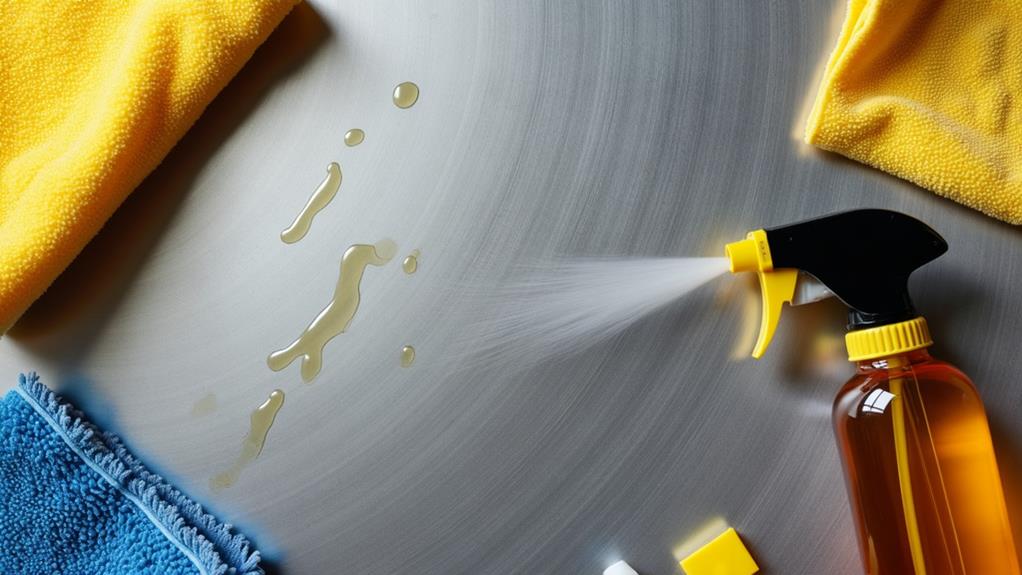How to Keep Stainless Steel Cutlery Looking Brand New
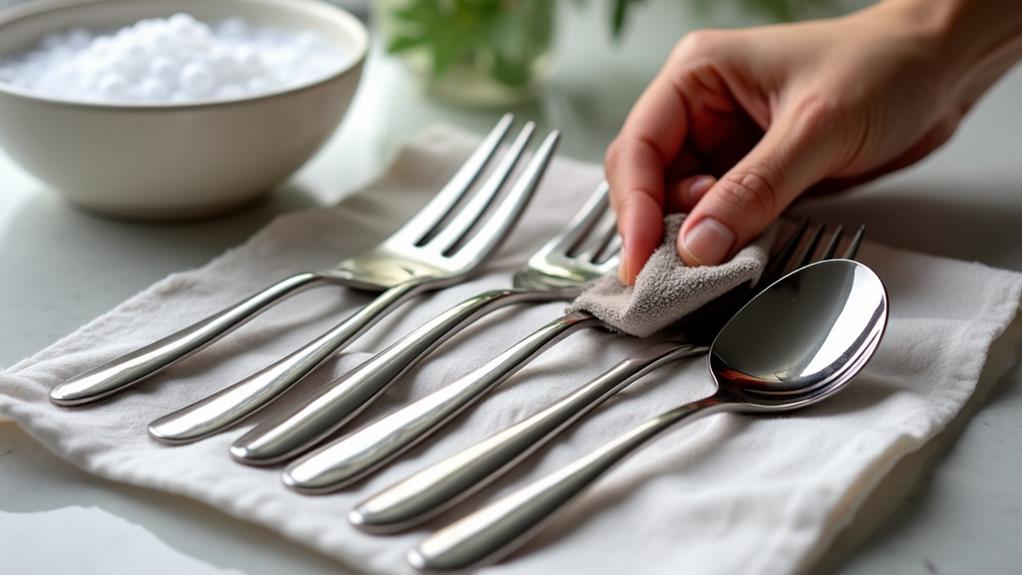
To keep your stainless steel cutlery looking brand new, wash them immediately after use with a soft sponge and mild dish soap. Avoid abrasive scrubbers to prevent scratches and dry each piece with a soft, lint-free towel to eliminate water spots. Use natural cleaners like baking soda and white vinegar for stubborn stains, and polish with a microfiber cloth and a bit of olive oil for extra shine. Store your cutlery in a dry place using drawer organizers or magnetic strips to minimize damage. Handle them gently and check regularly for any signs of wear. Uncover even more tips for pristine cutlery care.
Choose the Right Cleaning Products
Selecting the right cleaning products is crucial to maintaining the pristine look of your stainless steel cutlery. When choosing cleaners, you've got to think beyond just the immediate shine and consider the long-term health of your cutlery and the environment. Eco-friendly cleaners are an excellent option. They're tough on grime but gentle on your cutlery, ensuring that harmful chemicals won't erode the stainless steel over time.
For that extra sparkle, use a stainless steel polish. A good polish can remove stubborn stains and restore the original luster of your cutlery. Apply it sparingly and follow the manufacturer's instructions for the best results. Polishes are formulated to protect the surface while providing a gleaming finish, making your utensils look brand new.
Hand Washing Techniques
In terms of keeping your stainless steel cutlery looking new, proper hand washing techniques are vital. Initially, aim to wash your cutlery immediately after use. This cleaning frequency prevents food particles from drying and sticking, which can lead to stains and corrosion.
Begin by rinsing each piece under warm water to remove any food residue. Use a soft sponge or cloth with mild dish soap to gently clean the surface. Avoid abrasive scrubbers, as they can scratch the stainless steel. Make certain to clean all crevices, especially around the handles and any decorative elements.
After washing, rinse thoroughly to guarantee no soap residue remains. Immediate and proper drying methods are fundamental to prevent water spots and streaks. Use a soft, lint-free towel to hand dry each piece individually. Avoid air drying, as it can leave unsightly marks and potentially lead to rust spots over time.
Following these hand washing techniques not only maintains the appearance of your stainless steel cutlery but also extends its lifespan. With consistent cleaning frequency and careful drying methods, your cutlery will continue to sparkle and improve your dining experience for years to come.
Avoiding Harsh Chemicals
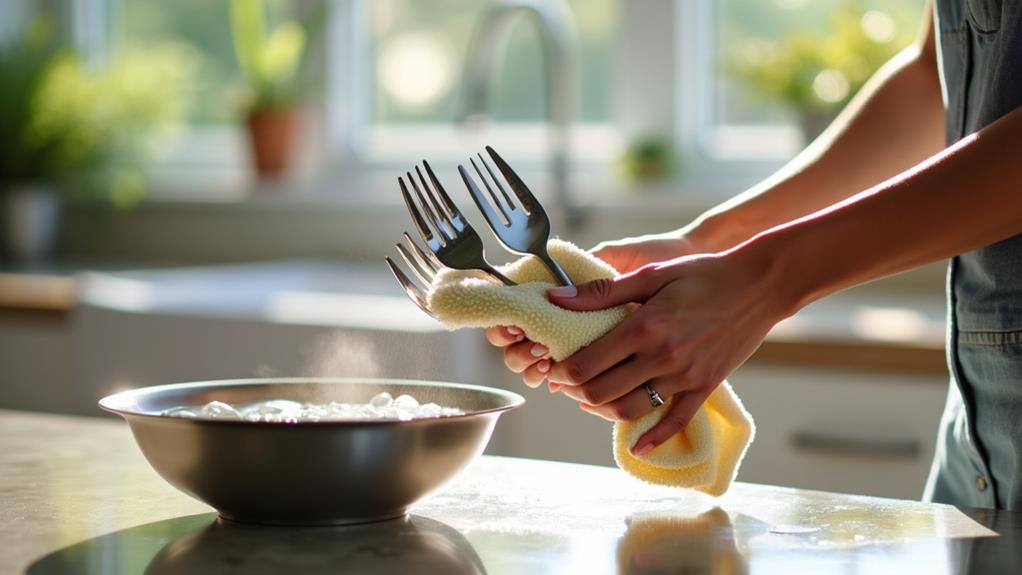
When caring for your stainless steel cutlery, you should always avoid using harsh chemicals. These chemicals can damage the protective layer of your cutlery, making it prone to rust and dullness. Instead, opt for natural alternatives that are just as effective and much gentler on your utensils.
One eco friendly solution is to use a mix of baking soda and water. This paste can be applied with a soft cloth to remove any grime or residue without scratching the surface. Another excellent option is white vinegar. Simply soak a cloth in vinegar and wipe down your cutlery. It's great for cutting through grease and leaving a shiny finish.
Lemon juice is also a fantastic, natural alternative. Its acidity helps break down any lingering food particles and leaves a fresh scent. Just rub a lemon wedge over the cutlery and rinse thoroughly.
Removing Stains Properly
Stains on stainless steel cutlery can be a common issue, but they don't have to be permanent. With the right cleaning methods, you can effectively tackle even the most stubborn marks. Begin by soaking your cutlery in a mix of warm water and mild dish soap for about 15-20 minutes. This simple step helps to loosen any food residue and makes stain removal easier.
For tougher stains, create a paste using baking soda and water. Apply this paste to the stained areas and gently scrub with a soft cloth or sponge. Baking soda is a gentle abrasive that won't scratch your cutlery but works wonders in removing stains. If you encounter persistent discoloration, try using white vinegar. Dampen a cloth with vinegar and rub it over the stains; the acidity can help dissolve stubborn spots without damaging the stainless steel.
Remember to always rinse your cutlery thoroughly after applying these cleaning methods, ensuring no residue is left behind. Dry them immediately with a soft towel to prevent water spots. By following these steps, you can keep your stainless steel cutlery looking brand new and ready for your next meal.
Polishing for Extra Shine
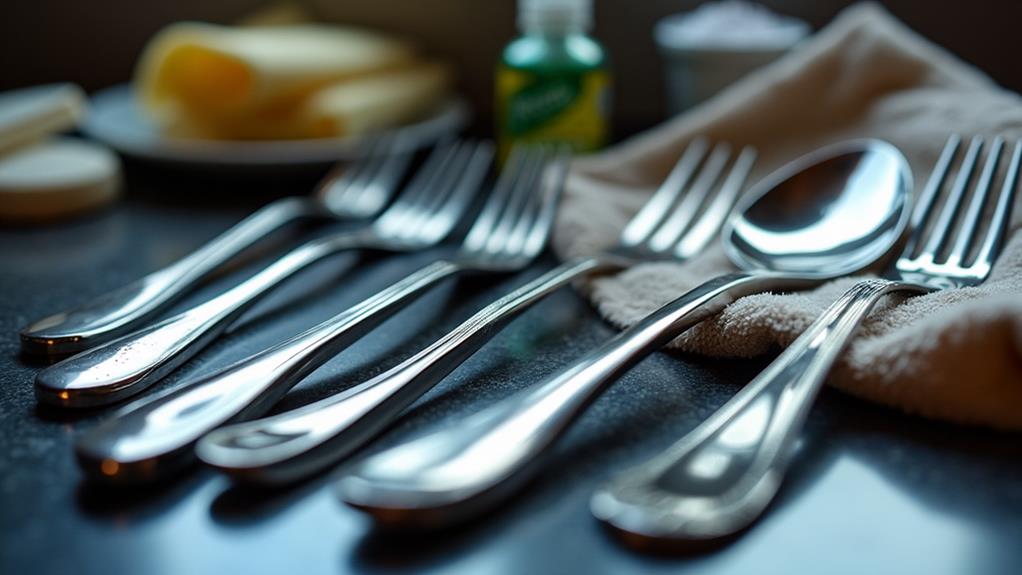
Once you've successfully removed any stains, it's time to add some extra shine to your stainless steel cutlery. Start by choosing the right polishing materials. A soft microfiber cloth works wonders for this task. Avoid using abrasive materials that could scratch the surface.
One of the best polishing techniques involves applying a small amount of olive oil or a stainless steel polish to your cloth. Gently rub the cutlery in a circular motion, focusing on any dull spots. This method not only improves the shine but also adds a protective layer against future tarnish.
For a more traditional approach, you can use a mixture of baking soda and water to create a paste. Apply this paste with a soft cloth and polish your cutlery using the same gentle, circular motions. Rinse thoroughly with warm water and pat dry with a clean, soft towel.
Don't forget to pay attention to the handles as well. They can often be neglected but deserve the same care to maintain their luster. By using these polishing techniques and materials, you'll keep your stainless steel cutlery looking brand new, adding an extra touch of brilliance to your dining experience.
Drying Cutlery Correctly
Properly drying your stainless steel cutlery is essential to prevent water spots and potential rusting. The best drying methods guarantee your cutlery remains spotless and shiny. Start by handwashing each piece thoroughly, then immediately move to drying. Don't let your cutlery air dry, as this can leave behind unsightly water spots.
Use a clean, soft microfiber cloth as your primary drying tool. Microfiber is excellent for absorbing water and polishing stainless steel simultaneously. Gently rub each piece, confirming all moisture is removed. Pay special attention to any crevices or decorative elements where water might hide.
If you're in a hurry, another drying method is to use a hairdryer on a low heat setting. Hold the hairdryer at a safe distance to avoid overheating the metal. This method is quick and efficient, especially if you're dealing with a large set of cutlery.
Avoid using abrasive drying tools like rough towels or paper, as these can scratch the stainless steel. Consistent, careful drying will keep your cutlery looking brand new for years to come. Remember, the key is to act quickly and use the right tools every time you wash your cutlery.
Proper Storage Solutions
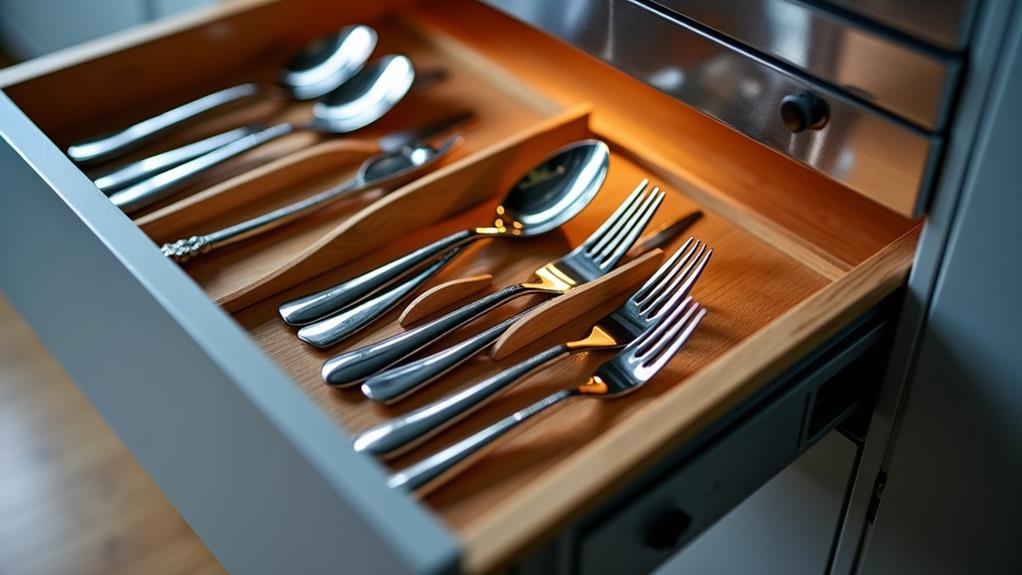
Although thorough drying is crucial, storing your stainless steel cutlery correctly is just as significant to maintain its pristine condition. Proper storage solutions not only prevent scratches and damage but also guarantee your utensils remain hygienic and ready for use. One of the most effective storage solutions is using magnetic knife blocks. These blocks keep knives separated and easily accessible, reducing the risk of nicks and dulling.
Drawer organizers are another excellent option. They allow you to neatly arrange your cutlery in a way that minimizes contact between items. This prevents scratching and keeps your drawer looking tidy. When choosing a drawer organizer, opt for ones with adjustable compartments to fit different sizes of cutlery.
You should also consider these storage tips:
- Use individual knife guards for added protection.
- Install a wall-mounted magnetic strip for a space-saving solution.
- Avoid overcrowding your storage spaces to prevent items from clashing.
- Regularly clean storage areas to avoid bacterial buildup.
Handling Tips and Precautions
Regarding handling your stainless steel cutlery, a few simple precautions can greatly extend its lifespan and maintain its shine. To begin with, always adhere to proper cutlery etiquette. This means avoiding actions like using your knife for prying open containers or using your fork to scrape food off non-stick pans. Such usage habits can cause scratches and dull the finish of your cutlery.
When setting the table, place your cutlery gently and avoid dropping them, as impacts can lead to dents or bends. During meals, try not to rest your cutlery on the edge of plates or bowls, as this can cause them to fall and sustain damage. Instead, use designated cutlery rests if available.
After use, promptly rinse off any food residues. Acidic and salty foods can cause spots or discoloration if left on the surface for too long. Don't leave your cutlery soaking in water for extended periods; this can lead to water spots or mineral deposits.
Lastly, handle your cutlery with care when washing. Avoid abrasive sponges or harsh detergents that can mar the surface. By incorporating these handling tips, your stainless steel cutlery will retain its brand-new appearance for years to come.
Regular Maintenance Routine
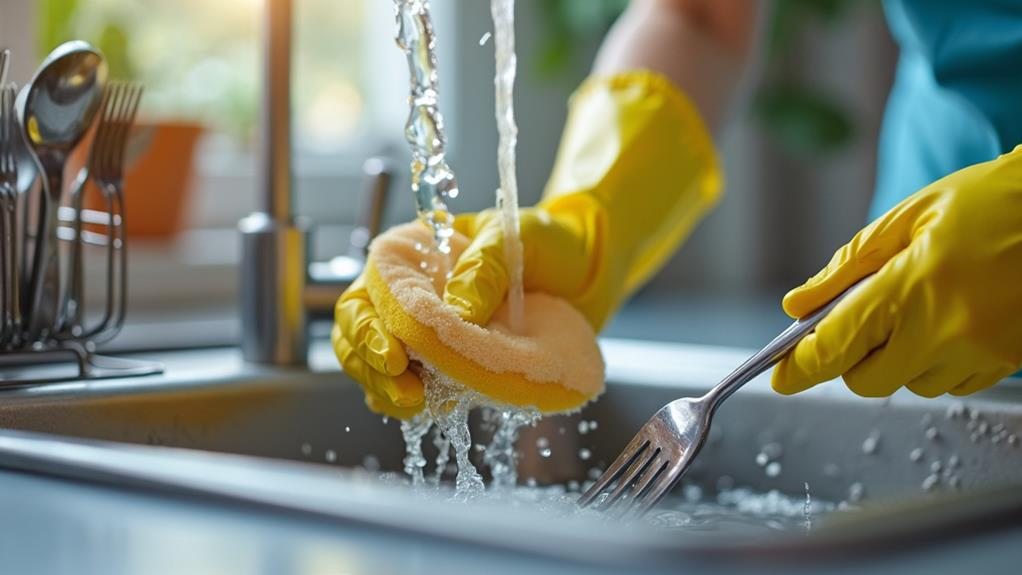
A consistent maintenance routine is key to keeping your stainless steel cutlery looking pristine. Regular care doesn't just improve the appearance; it prolongs the life of your cutlery. Start by establishing a routine frequency that works for you, regardless of whether it's weekly or bi-weekly. The right maintenance tools can make all the difference in preserving that new look.
- Clean after each use: Rinse your cutlery immediately after meals to prevent food particles from causing stains or corrosion.
- Dry thoroughly: Water spots can mar the shine of stainless steel. Use a clean, dry cloth to wipe every piece.
- Polish periodically: Use a stainless steel cleaner or a homemade solution of vinegar and water to polish your cutlery, restoring its luster.
- Store properly: Keep your cutlery in a dry place, ideally in a lined drawer or a cutlery tray to avoid scratches.

